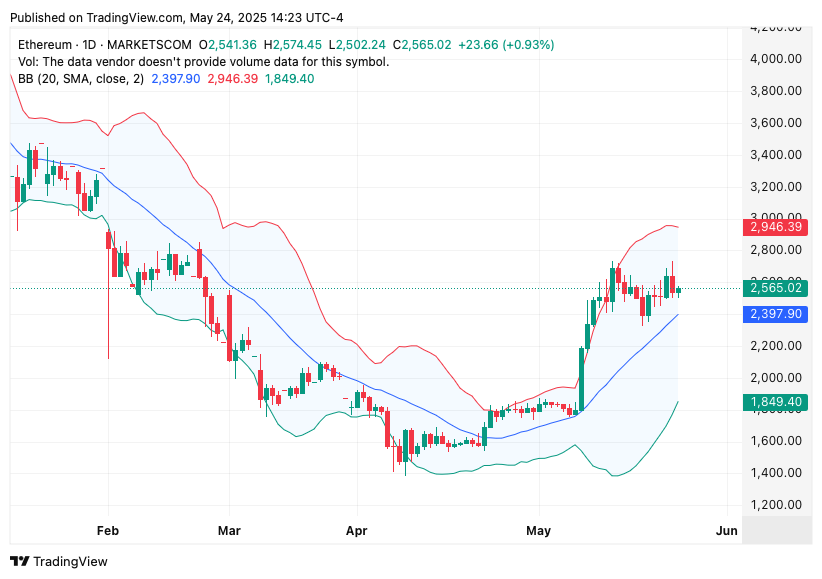The GENIUS Act: Will it Usher in a New Era for U.S. Stablecoins?
Will the GENIUS Act redefine U.S. stablecoin regulation? Explore how this groundbreaking legislation could reshape the crypto market, its benefits, risks, and the future of digital finance in the USA.
Preface
The world of cryptocurrency is always buzzing, and recently, a significant piece of legislation has captured the attention of everyone from seasoned investors to curious newcomers: the Guiding and Establishing National Innovation for U.S. Stablecoins (GENIUS) Act.
This bipartisan bill, which recently cleared a major hurdle in the U.S. Senate, aims to bring much-needed regulatory clarity to the burgeoning stablecoin market. But what exactly is the GENIUS Act, and what could it mean for the future of crypto in America?
What are Stablecoins, Anyway?
Before diving into the intricacies of the GENIUS Act, let's quickly recap stablecoins. Unlike volatile cryptocurrencies like Bitcoin or Ethereum, stablecoins are designed to maintain a stable value.


They achieve this by being pegged to a real-world asset, most commonly the U.S. dollar. Think of them as digital dollars – a way to leverage the speed and efficiency of blockchain technology without the dramatic price swings. They're increasingly used for everything from cross-border payments to facilitating trading within the broader crypto ecosystem.
The Need for Clarity: Why the GENIUS Act?
The stablecoin market has grown exponentially, now boasting a total market capitalization well over $200 billion. Despite this growth, the regulatory landscape in the U.S. has remained largely undefined, leading to uncertainty for issuers, users, and traditional financial institutions alike.
The GENIUS Act seeks to fill this void by establishing a comprehensive federal framework for stablecoins.
Key Provisions of the GENIUS Act
So, what does this "genius" legislation propose? Here are some of its key features:
Defining "Payment Stablecoins": The Act clearly defines what constitutes a "payment stablecoin" – essentially, a digital asset issued for payment or settlement, redeemable at a fixed amount (like $1).
Robust Reserve Requirements: A cornerstone of the bill is the requirement for all stablecoins to maintain a one-to-one reserve backing in high-quality, liquid assets. This means for every stablecoin issued, there must be an equivalent dollar amount held in cash, U.S. Treasury bills, or similar highly liquid assets. This aims to prevent the kind of instability seen with unbacked or algorithmic stablecoins in the past.
Tiered Oversight: The bill proposes a tiered regulatory approach. Smaller stablecoin issuers (those with under $10 billion in assets) could remain under state regulatory supervision, fostering innovation at a local level. However, larger, systemically important issuers would fall under the jurisdiction of federal agencies like the Federal Reserve and the Office of the Comptroller of the Currency (OCC), ensuring stricter oversight.
Consumer Protection: The GENIUS Act includes strong consumer protection provisions. It mandates that stablecoin holders would be prioritized for repayment in the event of an issuer's bankruptcy, and issuers would be required to adhere to anti-money laundering (AML) and anti-terrorism financing rules. It also clarifies that stablecoins are generally not eligible for FDIC insurance and prohibits issuers from using names that suggest government backing.
Restrictions on Interest-Bearing Stablecoins: While the Act doesn't explicitly ban interest-bearing stablecoins, existing SEC guidance suggests that those offering yield might be treated as securities. This likely means that payment stablecoins will primarily function as a medium of exchange to avoid additional regulatory complexity.
Opening Doors for Banks: A significant aspect of the GENIUS Act is its potential to allow traditional banks to issue their own stablecoins, bringing them further into the digital asset space and potentially modernizing payment systems.
While the GENIUS Act aims to bring much-needed clarity and stability to the U.S. stablecoin market, it's not without its potential risks and criticisms. Here are some of the key concerns that have been raised:
Financial Stability Risks
Bank Runs and Systemic Risk: Despite the robust reserve requirements, some critics argue that stablecoins, especially if they become widely adopted, could still be susceptible to "runs" similar to traditional bank runs. If a large number of stablecoin holders try to redeem their stablecoins for fiat currency simultaneously, it could force issuers to sell off their underlying reserve assets (like U.S. Treasury bonds) rapidly. This could potentially destabilize the Treasury market and have broader repercussions for the financial system, especially if a large, systemically important stablecoin issuer faces distress.
Insufficient Capital and Liquidity Buffers: While the bill requires reserves, some argue that it doesn't mandate sufficient capital and liquidity cushions for stablecoin issuers, leaving them vulnerable to market shocks. This could lead to a cascading effect if a major stablecoin collapses, similar to the TerraUSD crash, which wiped out billions from the crypto market.
Interest-Bearing Stablecoins Loophole: Although the Act aims to prohibit direct interest payments on stablecoins, critics point to loopholes that could allow affiliate arrangements (e.g., a platform partnering with an issuer to offer yield) to circumvent this. This could reintroduce risks associated with yield-bearing stablecoins, which some consider akin to unregulated money market funds.
Consumer Protection Gaps
No Federal Deposit Insurance: A significant concern is that stablecoins, even under the GENIUS Act, would generally not be eligible for FDIC insurance. This means that if a stablecoin issuer fails, consumers' funds might not be protected in the same way as traditional bank deposits. While the bill grants stablecoin holders priority in bankruptcy, the recovery process can still be lengthy and uncertain.
Custodial Risk: Even with regulated issuers, the risk of hacks, embezzlement, or insolvency of the wallet provider or custodian where stablecoins are stored remains. While the bill aims to address issuer risk, the broader ecosystem still carries inherent digital asset risks.
Clarity on "Payment Stablecoin" Definition: Some experts suggest the definition of "payment stablecoin" might not fully cover stablecoins on private blockchains, potentially leaving regulatory gray areas and ambiguity, especially concerning their use cases and the type of ledger.
Regulatory and Enforcement Challenges
"Big Tech" and Banking-Commerce Blurring: The Act's potential to allow large technology firms to issue stablecoins raises concerns about the blurring of lines between banking and commerce. Critics worry about potential conflicts of interest, data privacy issues (as these firms could leverage vast user data for payments), and an erosion of competition.
Offshore Issuer Loophole: A major criticism is that the bill may not adequately regulate offshore stablecoin issuers, such as Tether, which is currently the largest dollar-pegged stablecoin. This could put U.S. stablecoin issuers at a regulatory disadvantage and allow illicit activity to continue via foreign-issued stablecoins accessible in the U.S. through decentralized exchanges.
Illicit Finance Concerns: While the Act includes AML/CFT provisions, some argue it doesn't go far enough to address the inherent challenges of policing illicit finance within the stablecoin ecosystem, especially with peer-to-peer and decentralized finance transactions. Concerns have been raised about the ease with which stablecoins could be used to evade sanctions or facilitate criminal activity.
Conflicts of Interest for Public Officials: Some critics have voiced concerns about potential conflicts of interest, especially regarding elected officials who may have financial ties to the cryptocurrency industry, including stablecoins. They argue that legislation could inadvertently benefit these individuals or their ventures.
Innovation vs. Regulation Balance
Stifling Innovation for Smaller Players: While larger entities might be able to absorb the compliance costs of a federal framework, smaller stablecoin issuers might find the regulatory burden prohibitive. This could lead to market consolidation and hinder innovation from grassroots startups.
Fragmentation of the Stablecoin Market: The tiered oversight (state vs. federal) could lead to fragmentation in the stablecoin market, creating confusion for consumers and potentially uneven regulatory enforcement across different issuers.
In essence, while the GENIUS Act is a commendable step towards a regulated stablecoin market, its effectiveness will depend on the details of its implementation, the ongoing evolution of the stablecoin landscape, and how it addresses these various risks and criticisms to truly foster a secure and innovative environment.
The Impact and the Road Ahead
The recent advancement of the GENIUS Act in the Senate is a landmark moment. It signals a bipartisan commitment to regulating the crypto space and a desire to ensure the U.S. remains at the forefront of digital asset innovation. Proponents argue that the bill will provide much-needed clarity, foster consumer trust, and strengthen the U.S. dollar's dominance in the digital realm.
However, challenges and debates remain. Some worry about the potential for over-regulation stifling innovation, particularly for smaller startups facing increased compliance costs. Concerns have also been raised about the potential for concentration in the industry if only a few large players can meet the stringent federal requirements.
Despite these concerns, the GENIUS Act represents a significant step towards a formalized and transparent regulatory framework for stablecoins in the United States. If enacted, it could indeed usher in a new era, allowing for the safer and more widespread adoption of these digital dollars, with profound implications for the future of finance. The crypto world will be watching closely as this "genius" endeavor continues its journey through the legislative process.












